There are many different views of what graffiti means in society—some people disapprove of the graffiti on the walls of neighborhoods of their cities. Others view it as a form of art that reflect the issues and hot topics of today. But no matter what you think about graffiti, it reflects some of the issues we can see in Israel. What is graffiti? The definition is “the writing or drawings that have scribbled, scratched, or painted illicitly on a wall, or other surface, often within public view.” It comes from the Italian word, graffiato, meaning scratched. While the oldest graffiti dates back to the beginning of writing in ancient Egypt and Rome. But modern graffiti as we know it today, dates to the late 1960’s in Philadelphia, Pennsylvania, in the United States. It began as a political protest or the marking of gang territory.
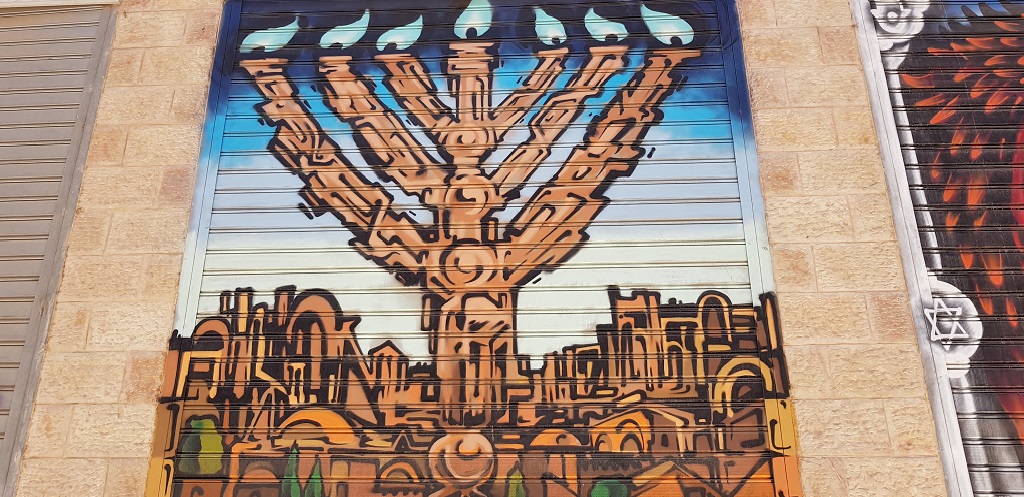
There are some places that are home to more graffiti than others, such as Tel Aviv. Some projects are better known than others: the Eggplant Kid, Solomon Souza and the Mahane Yehuda Market. But I have found that the graffiti in places where it is less common is very telling. When you look at the different graffiti art in Israel, you can discover what is on the minds of Israelis throughout the country. Make sure to look around while you’re exploring the country, so you can see what is going in Israel. Here are my top 10 graffiti art pieces in Israel:
The 27 Club
This is a piece in the Florentine neighborhood in Tel Aviv. The 27 Club is a list of artists who died at the age of 27 because of drug and alcohol issues. The artists who are painted up on the wall are not all of the members of the 27 Club, but a just a few of them. When we look at the painting, from left to right, we see:
Brain Jones, of the Rolling Stones
Jimi Hendrix
Janis Joplin
Jim Morrison
Jean Michel Basquiat, graffiti artist
Kurt Cobain, and
Amy Winehouse
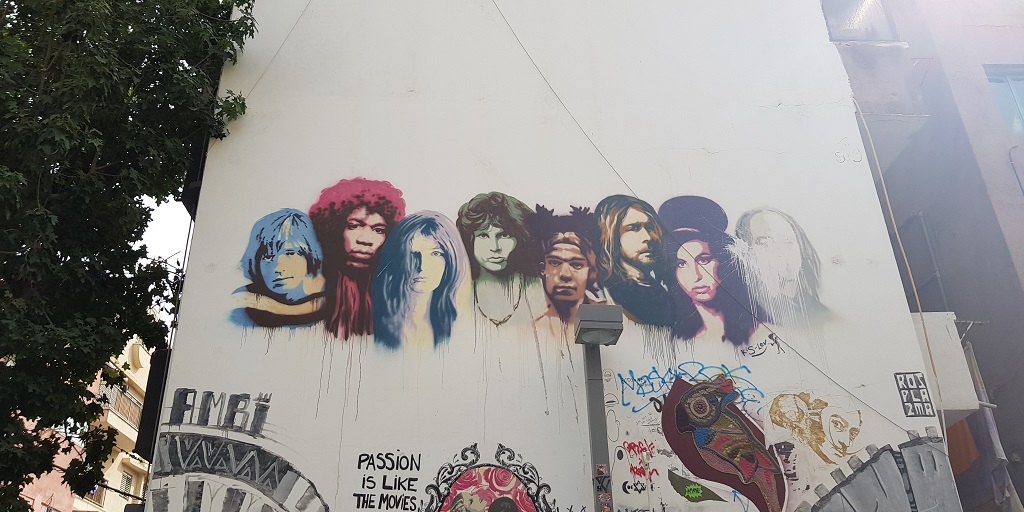
The last face on the right is blurred, and is the artist who made the work, Kislev. At the time, he was struggling with drugs and alcohol, and was 27 at the time. In a way, he was making a prediction about what was going to happen to him. When Kislev succeeded to kick his habit, his sister came to this spot and erased part of his face.
“If I Forget You O Jerusalem”
The first part of this graffiti is part of a famous phrase from the Book of Psalms, chapter 137. It is written, beginning in verse 5:
“If I forget you, O Jerusalem,
Let my right hand wither;
Let my tongue stick to my palate
If I cease to think of you,
If I do not keep Jerusalem in memory
Even at my happiest hour.”
This is an incredibly important verse in Judaism. Because of the last sentence this part of the chapter is said at Jewish weddings, as one’s wedding is supposed to be one’s happiest hour. But after the groom says this sentence, he stomps on a glass to remember the destruction of the holy city of Jerusalem. Many people know the first part of the saying, “If I forget Thee, O Jerusalem, let my right hand wither.”
However, the graffiti we see around Tel Aviv doesn’t say the second part of the phrase “let my right hand wither.’ Instead, it says “If I forget thee, O Jerusalem, It’s because of Tel Aviv.” The twist of the phrase relates to the tension between the two cities. Jerusalem is religious, spiritual, and on the top of a mountain; it has dry air and is very political city. Tel Aviv is a secular, flat, humid, and cultural city, These differences have led to tensions between the two cities. What Tel Aviv is, Jerusalem isn’t, and what Jerusalem is, Tel Aviv isn’t. So when you leave Jerusalem for Tel Aviv, and forget about the holy city, the new city is why. And you can see that Tel Aviv is well aware of this.
Downtown Haifa
The downtown area of Haifa, specifically the area near the port and the Merkaz HaShmona Train Station, is an area that has been a bit ‘down in the dumps’ in recent years. It was neglected, forgotten, and run down. But in recent years, the Haifa municipality stared to invest in this part of the city through pubs, restaurants, and stores. Part of this process and investment was to host a graffiti festival several years ago. Graffiti artists from around the world to paint the streets and decorate the streets. The graffiti in this part of Haifa has made it colorful, distinct, and uplifted. The goal of rejuvenating the neighborhood of downtown Haifa has come far in its progress. There is still a way to go, but you can’t miss how far it’s come. The graffiti is a clear sign of that progress.

Hip-Hop Festival Platform in Ashdod
In 2017, the city of Ashdod hosted it’s first Hip- Hop Festival, and it completely took off. The Festival was part of a program to improve the living standards of the city and attract young people to Ashdod. When the municipality prepared for the Festival, artists painted graffiti on the benches and walls around the stage and platforms, in order to suit the atmosphere of the Hip-Hop Festival. Bright colors and rounded letterings were used. All of it is up until today, which creates a special touch to the city of Ashdod.
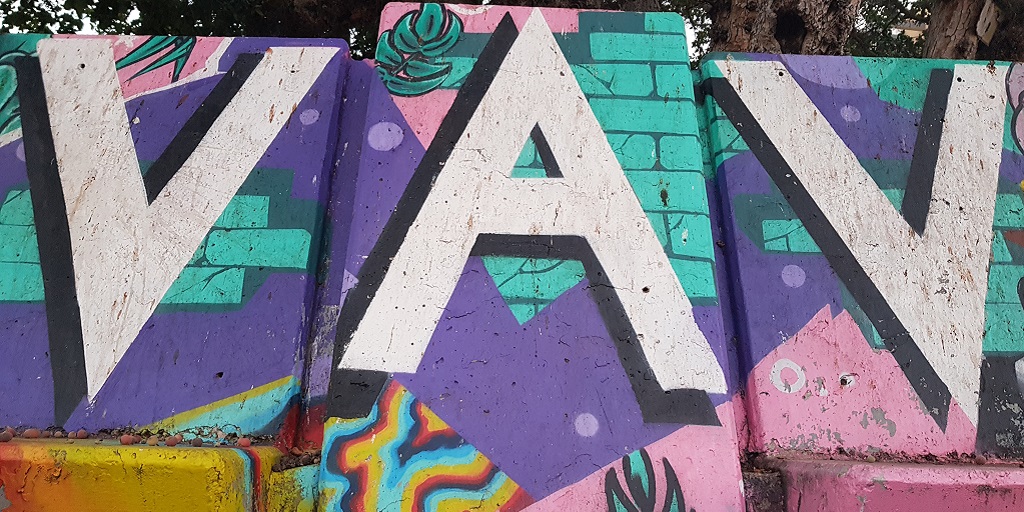
Braille Graffiti
This is a very special piece of graffiti. Braille is a system of raids dots that allow blind people to read. Vered Dror designed this piece, and a trip to Europe motivated her to make it. Because while she was there, there were many swastikas graffitied throughout the cities and towns she traveled through. This clearly troubled her. When she returned, she began a braille series with the statement: “I didn’t notice. I didn’t notice a thing.”
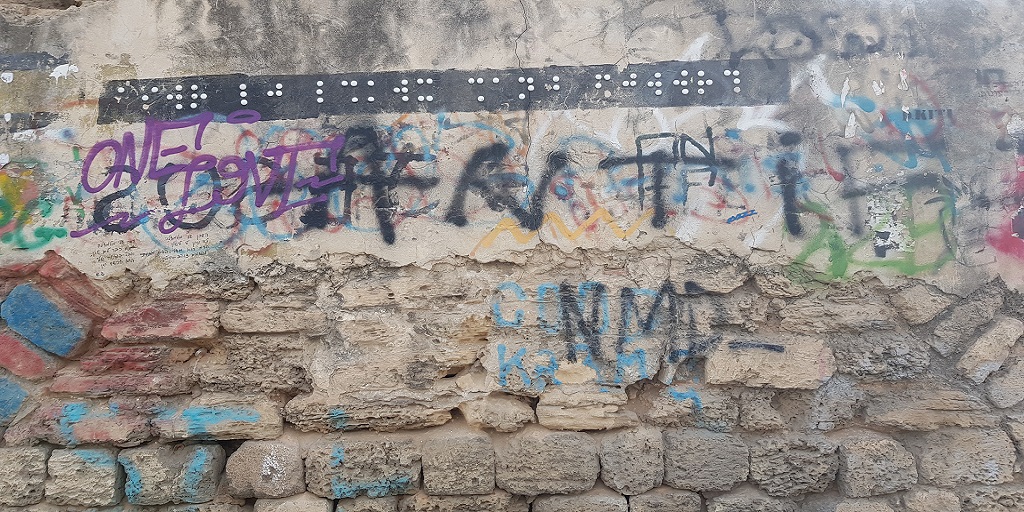
This points to the people in Europe who claim they didn’t know what was happening when anti- Semitic acts were on the rise. It also points to the fact that many people see the signs of hate, racism, anti-Semitism, homophobia, and other signs of xenophobia. They know it’s happening, but they are conveniently blind, just enough not to do anything about it. It definitely makes us think about what we can do to stop these kinds of horrific things from happening.
‘Sorry Mom’
This isn’t as common of graffiti as some of the other graffiti I’ve talked about in this post. But every once in a while you can see ‘sorry mom’ written on a wall throughout the country. It’s a reference to all of the headaches children give their parents. No matter how old we are, we can always give Mom and Dad a headache. Later we always come back and say one famous, or infamous, sentence: ‘Sorry Mom.’ Some things are universal—this is one of those things.
‘One Love’
On one of the streets in the city of Ashdod (Israel’s fifth largest city), is a piece of graffiti that I love passing by every time I’m on the bus or running my errands. It’s got big, red, rounded letters spelling out One Love, and topped with a red bird. It is just a feel-good graffiti that reminds me to always look positively in life.
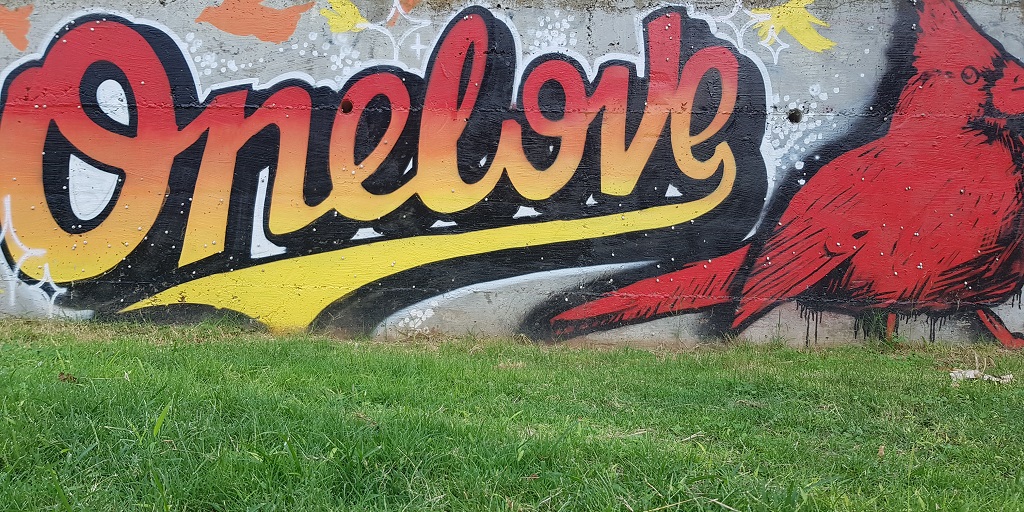
Girl in the Overalls
This is a new one I found on the edge of the Florentine neighborhood in Tel Aviv and Jaffa. It depicts a young girl in overalls. I like it because of the details, because it’s intriguing, and because it brings you in. It makes me think there is a story behind it, even though I don’t know what it. I hope this one stays because not every graffiti painting stays forever. Sometimes the municipality paints over the graffiti, sometimes other artists graffiti over it. But, personally, I hope this one stays up. 😊
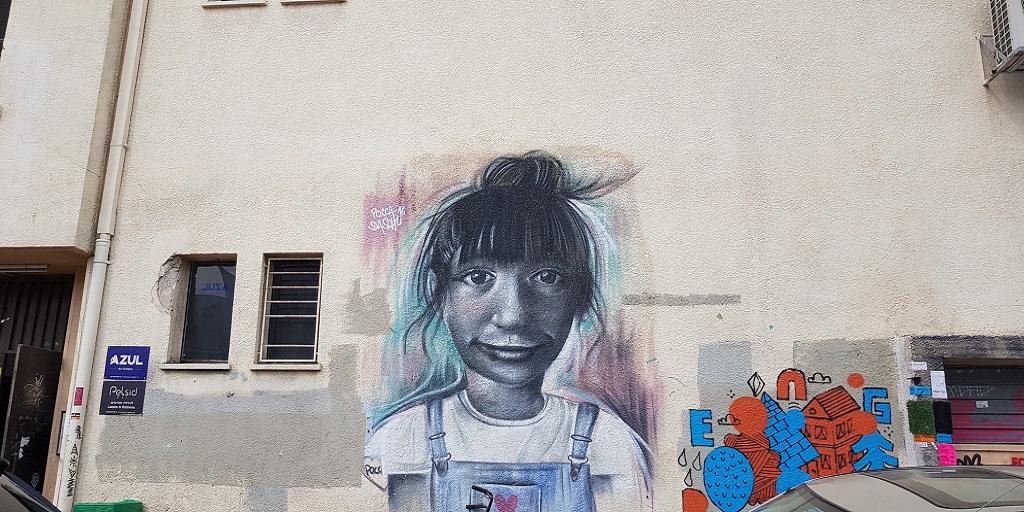
Care for a drink?
Drawn on an electrical box in Jerusalem, a moment’s walk from the Mahane Yehuda Market is a refrigerator filled with bottles of Diet Coke, Coca- cola, Fanta, and water. Next to the stores and restaurants that line the street, this graffiti almost blends in with the surroundings. You really have to keep your eyes open and look for it in order to realize what you’re really looking at!!
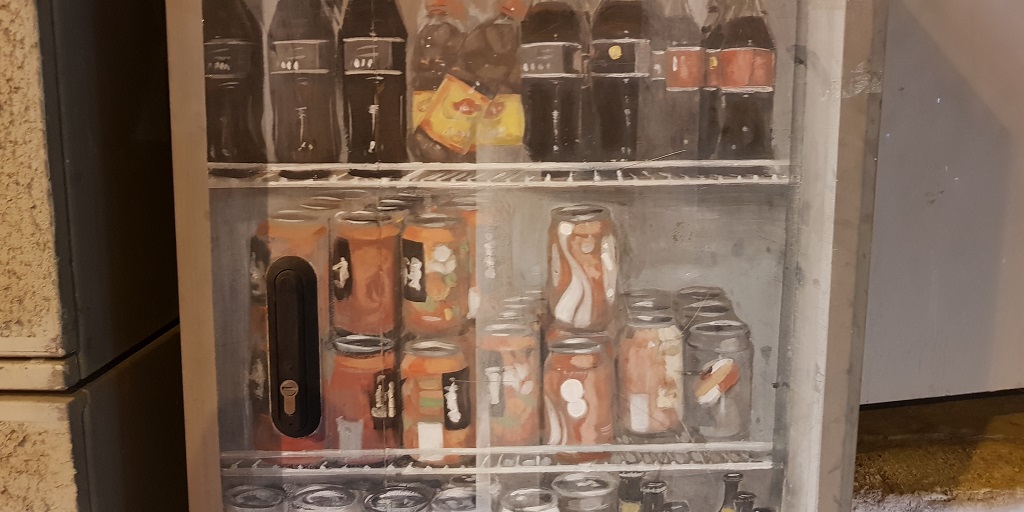
Once Upon a Time
This piece of street art is maybe more well-known to the traveler in Israel, especially for those of us who have explored the Old City of Jerusalem. It is a painting on the wall outside of the restrooms and entrance to the Davidson Center. The painting depicts a ‘day in the life’ scene of ancient Jerusalem. While we can’t always get an idea of what life was life back then, this picture helps gives us a hint or an idea. People often take pictures in front of this painting for a memory of their visits in the Holy City of Jerusalem.
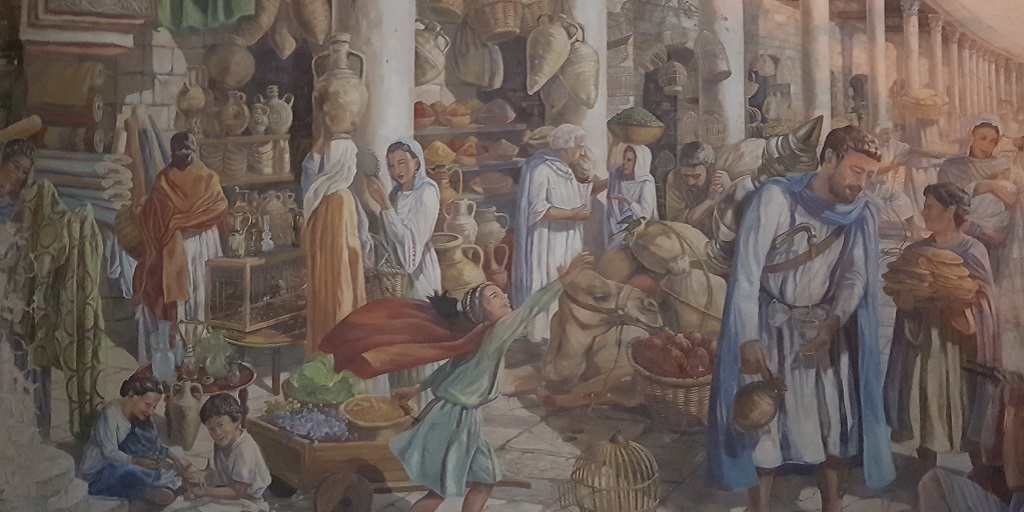
And so, when you look around the Israeli cities you travel in….
You’ll see all sorts of graffiti and street art, reflecting some of the issues in Israeli society today. Sometimes it simply reflects a universal human experience. Either way, when you look around, when you pay attention to what’s around, and when you even photograph the streets, you will be making your trip in Tel Aviv, Haifa, Jerusalem, and Israel as a whole, all the more unique, special, and memorable. The graffiti of Israel is different than what you may see at home; it is unique and a thing of its own. If you pay attention to it, it will help you get a better understanding of what Israel, and Israeli culture, is all about.





